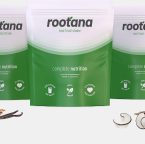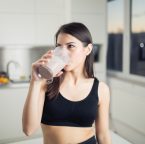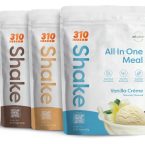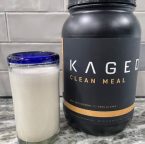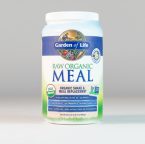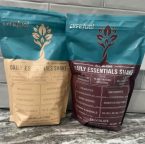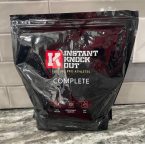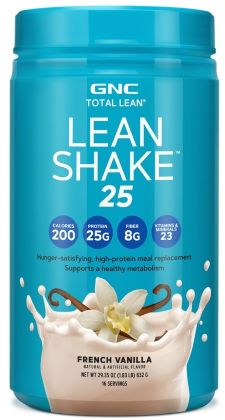
If meal replacement shakes are meant to replace a meal, does that mean you don’t have to eat food anymore?
Back in 2013, the meal replacement supplement, Soylent, was all the talk of the town. Seriously! Today, everyone’s talking about the benefits of keto and being on a ketogenic diet. In 2013, it was all the rage to take meal replacement shakes, with Soylent leading the pack.
One of the reasons so much attention was put on that particular meal replacement shake over everything else was the inventor’s story. The man claimed that he had managed to exist an entire month off of his shakes while never feeling tired or weak. Instead, he claimed to have boundless energy, incredible skin, and ultimately a more productive life due to switching over to protein shakes instead of real food. This brought a lot of attention and scrutiny. While much of his claims were true, it became essential to keep people from going too overboard with what was being insinuated.
While Meal Replacements can be used to replace “a” meal, it is not intended to replace “all” meals.
Now, with all that said, you may be curious as to why you can’t live off of just meal replacements. After all, they’re quite literally called “meal replacement”. If they weren’t meant to be an alternative to food, certainly they’d have chosen a better name to call them, wouldn’t they?
Hunger Levels While Taking Meal Replacements
In a 2007 study published by Hormone and Metabolic Research, it was discovered that, when a person drank a smoothie compared to at physical, chewable food, the person continued to feel hungry afterward, despite the fact that both groups (the smoothie vs the control) were given the same amount of nutrients and calories.
The study concluded that the hunger hormone, ghrelin, played a huge factor in how it affected a person based on the method that they consumed food. When taken as a solid, and after going through the chewing process, food consumed left a person feeling “fuller and more satiated”. Conversely, when food was taken as a liquid, and the chewing process was avoided, people continued to feel hungry and as though they hadn’t eaten.
This ultimately resulted in the conclusion that, in terms of appetite and hunger suppression, meal replacement shakes were not an ideal method of consuming food and were not recommended as a perpetual option for adults.
And while there have been many other studies that “seemingly” refute this evidence – nearly all focusing on dealing with losing weight or helping manage blood sugar during the short term – they all conveniently ignore that this is, at best, a temporary fix and not a permanent lifestyle change for the person.
Related: The 13 Best Meal Replacement Shakes on the Market
What Meal Replacement Options Don’t Include
We often talk about the caloric requirements in food, and how that factors into a person’s feeling of satiety. However, other important aspects are in the food that isn’t mentioned nearly as much. For example, we’ve all heard that a calorie from a donut isn’t the same as a calorie from a steak. This is because, in addition to the calories from both foods technically being the same, the other nutritive factors between the two are very different from one another.
This is even more prevalent when it comes to meal replacement shakes and actual food itself.
Now, this is true if we’re going over some of the cruddier options like Slimfast or Nutrisystem. These often have very low protein per serving amounts (with Slimfast only having 2 grams per serving) which naturally means they aren’t going to do much for you. But what about some of the more impressive meal replacement protein shakes out there, like Huel, which has an impressive balance out between their calories and their macronutrients, with 37 grams of protein in every serving?
Surely if you were to factor in all of the different nutritive factors in a quality meal replacement shake (the various vitamins, minerals, Omega 3s, etc.), you’d be hard-pressed to find an actual meal plan that successfully and consistently offered that same amount of nutrition every time you ate. Why, then, are these not a viable option for people long-term?
Simply put, antioxidants and phytochemicals.
The Importance Of Antioxidants & Phytochemicals In Food
As mentioned earlier, when most people think of whether they’re eating something good for them, it almost always breaks down to very general and very simplified examples. Again, almost everyone knows that “calories from a steak are different from calories from a donut”.
However, this is largely because people correlate steaks with high amounts of macro-nutritive protein while donuts have nothing going on with them outside of sugar and carbs. If you were to consider that plants can be eaten quite regularly while having very little of the same protein, one could make the case that plant-based diets aren’t sustainable, which we all know is false.
This is because, what is missing from so many shake supplements out there is none other than antioxidants and phytochemicals, things most often found in plant compounds. Not only are they a great way to turn off ghrelin in the body, but these compounds are also great for heart health and reducing one’s chances of getting a disease.
Just a few of the different examples of phytonutrients that we know of include things like flavonoids, glucosinolates, isothiocyanates, and indole-3-carbinol, just to name a few. These plant-based compounds offer a huge benefit to the body and work to fight against inflammation in the body. Inflammation, in its chronic state, is heavily linked to long-term diseases like obesity.
How Much Of Either Compound Do We Need?
You’ve probably seen your fair share of meat-eaters running around that abhor veggies, yet are doing fine overall. Similarly, if we just take a look at the wild, carnivorous animals are known for solely eating meat, rarely, if ever, consuming plants. Yet and still, these animals don’t seem to suffer from any lack of antioxidants or phytochemicals in the body.
This is because the body doesn’t need much of either compound to utilize either of them. That means if the meat you’re eating has trace amounts of antioxidants and phytochemicals, that will generally be enough for most people out there.
Yes, you’ll do better with more compared with less, but that just goes to show how much these compounds can assist the body. This is further evidenced when you consider that most food labels similarly don’t measure or mention phytochemicals or antioxidants at all.
What Else Is Needed For Our Food
Even outside of antioxidants and phytonutrients, there are plenty of other vitally important components, like lipases, proteases, amylases, and other digest enzymes. These things, while rarely ever included on food labels, are an essential aspect of any diet.
In this case, digestive enzymes are incredibly important, as they help the body absorb the nutrients that your food does offer you, making the most of your calories instead of just instantly turning them to fat.
Other nutritive aspects include prebiotic fiber as well as probiotic bacteria. Again, while these are rarely ever included on food labels, both play huge roles in a person’s overall health as well as how they feel after eating. While prebiotic fiber is great for ensuring that a person walks away feeling satisfied after a meal, probiotic bacteria works to keep the digestive tract operating smoothly and allow the body to absorb as much nutrition from your consumed food as possible.
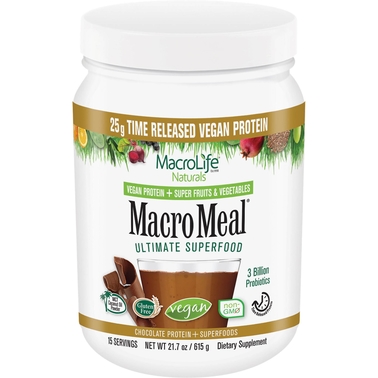
What To Look For In A Meal Replacement Shake
Of course, it needs to be clear that meal replacement shakes aren’t something you should run away from or see as being “bad”. Provided they are from a good brand and have quality ingredients, meal replacement protein shakes are a great way to get a ton of nutrition while on the run or when dealing with a situation where you need to supplement your current eating diet.
The thing is that you just can’t only take meal replacement shakes throughout the day as your sole method of consuming food. So long as you follow that, a quality replacement shake is something that’s highly recommended.
The problem, unfortunately, is that there are a lot more “Slimfasts” out there than “Huels”. If you want to make sure you’re getting the most out of your meal replacement shake, there are a few things you’ll want to be on the lookout for:
#1. Caloric Density
Firstly, your meal replacement shake should ideally have enough calories per serving to warrant the title of “meal replacement”. If a brand is touting that it is a meal replacement shake, yet only has around 90 or so calories per serving, understand that they’re playing you. Since they know most people see calories inherently as a bad thing, they’re tricking you into thinking that a low amount of calories is ideal for your meal replacement when nothing could be further from the truth.
For proper perspective, an apple is around 80 calories and a snickers candy bar is just around 120 calories. Most snack-sized bags of chips are around 200 calories. If you think 90 calories for a “meal replacement shake” is going to be enough, you’re going to be in for a rude awakening.
#2. Healthy Balance of Nutrition
If you read the pack of most meal replacement supplements, you’d be surprised at just how little nutrition is in each serving. Generally, they’re loaded with artificial chemicals, sugars, and a dash of synthetic vitamins. This isn’t going to fly if you’re trying to be serious here.
A good meal replacement supplement should have a healthy balance of carbs, fats, and proteins. It should also have a plethora of whole food vitamins and minerals as well as some digestive enzymes and fibers along with probiotic bacteria.
By hosting this variety of different pieces of nutrition, you can ensure your shake is as close to a real meal replacement as possible. And while you’re likely to be a bit hard-pressed to find the perfect meal replacement that has every single one of these aspects in their right ratios, the closer you get, the better.
#3. Avoids High Amounts of Omega-6
Read any bit of information on the subject and it’ll become very obvious just how terrible Omega-6 fatty acids are for you when in high amounts. Simply put, they are incredibly inflammatory to the body and can often result in the body ending up in a chronically inflamed state, leading to a myriad of different diseases.
You’ll want to avoid any shake supplements that include canola oil, sunflower oil, or vegetable oil, as these are all high in Omega-6s.
Conclusion
Ideally, when it comes to eating, you should be getting virtually all of your nutrition from eating whole foods and real foods. However, we live in the real world and going through the process of preparing, cooking, and eating real foods can be a hassle.
Even eating out at high-quality places has its fair share of issues, as many of the foods you’re dealing with aren’t going to be the highest of quality and will likely be cooked in some of the cheaper oils. Meal replacement shakes are a great way to give your body many of its required nutrients in a fast, easy, and effective manner.
The key is that you treat them for their intended purpose as a meal replacement shake rather than a diet replacement shake. Taking them three or four times throughout the week alongside a small salad is a great way to maximize the effects of your shake while also ensuring that you are never distracted too long from the hustle and bustle of your day.
References
1. Tieken, SM et al. Effects of Solid versus Liquid Meal-replacement Products of Similar Energy Content on Hunger, Satiety, and Appetite-regulating Hormones in Older Adults. Horm Metab Res. 2007 May; 39(5): 389–394.
2. Heymsfield, SB et al. Weight management using a meal replacement strategy: meta and pooling analysis from six studies. Int J Obes Relat Metab Disord . 2003 May;27(5):537-49.

Ryan is a former college wrestler and lifelong fitness fanatic. He has run half marathons, done mud runs, placed in body transformation contests, coached wrestling, and now coaches girls’ soccer. Not to mention he has also tried literally hundreds of supplements over the years and has a vast and thorough supplement knowledge. He has written for Muscle & Strength, Testosterone Junkie, The Sport Review and other publications. He is also the editor-in-chief of this website and has over 25 years of experience in the fitness industry. Feel free to connect with him on his LinkedIn page below.

